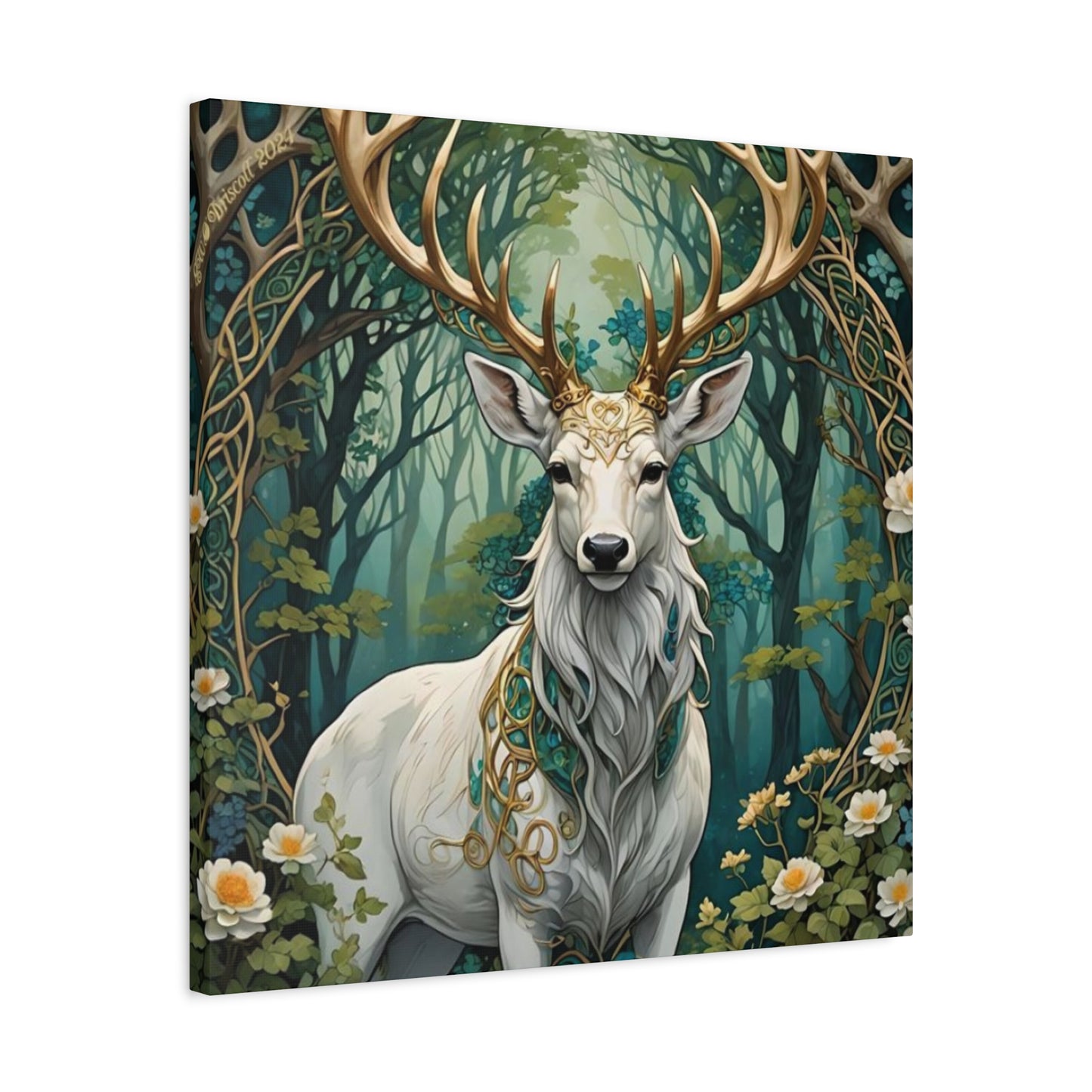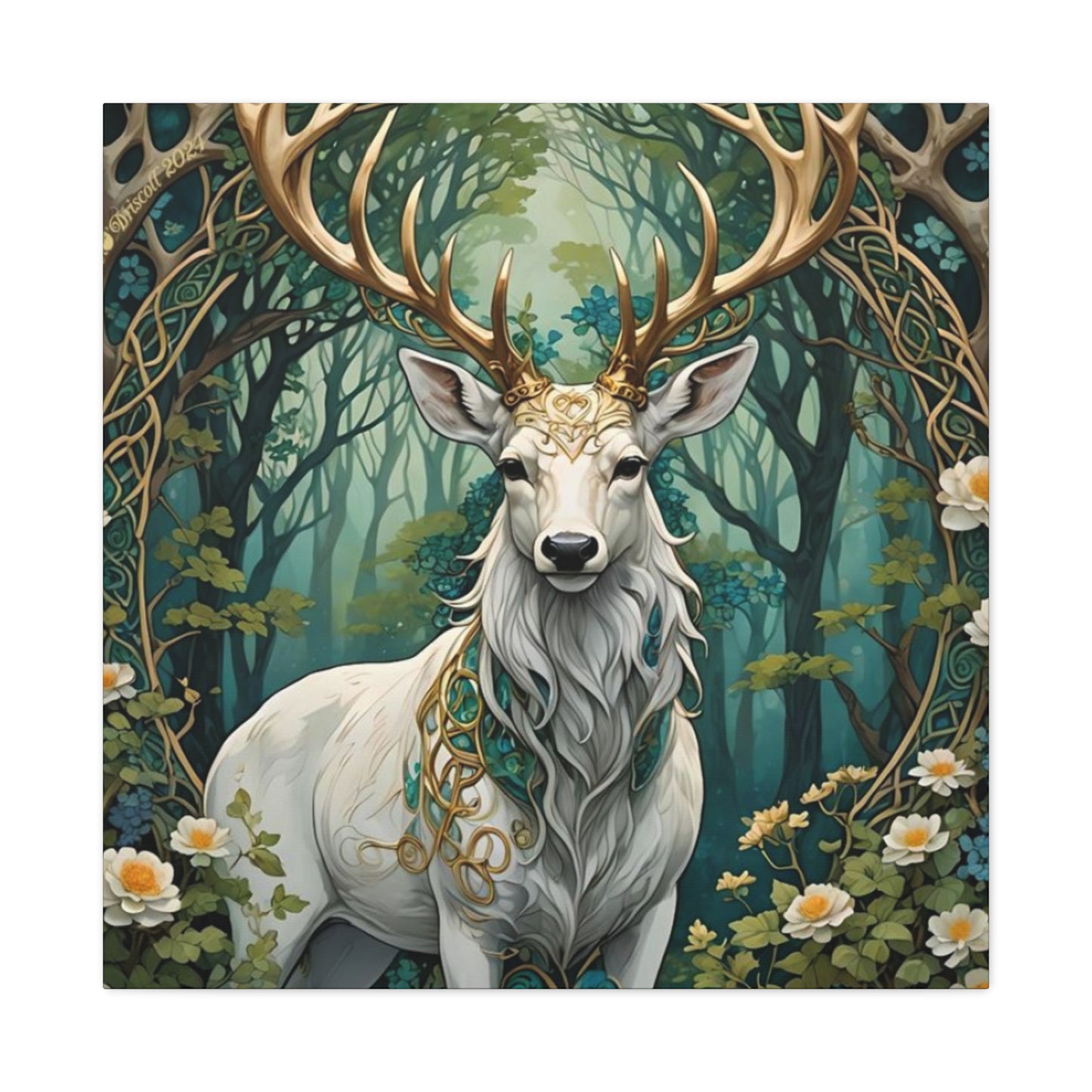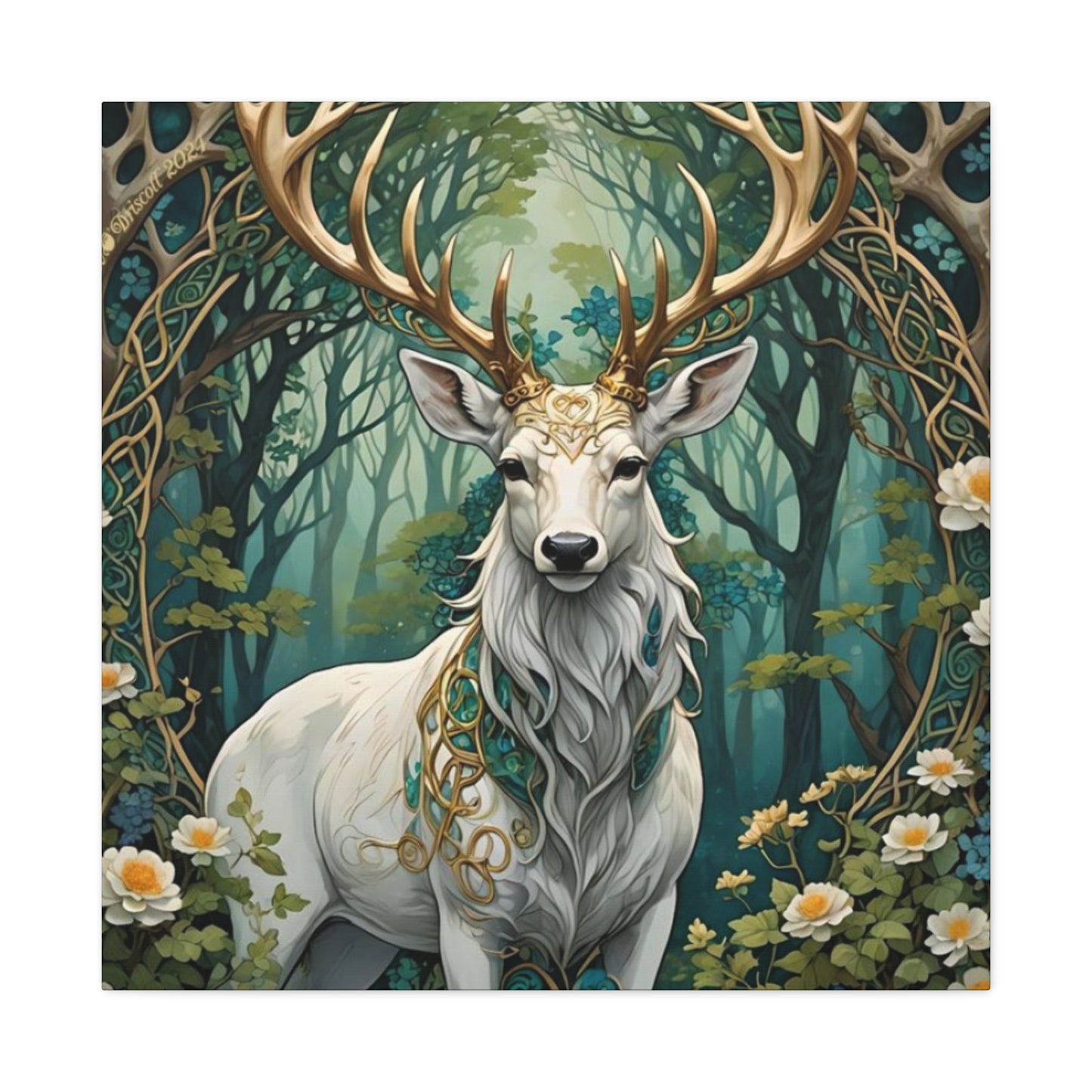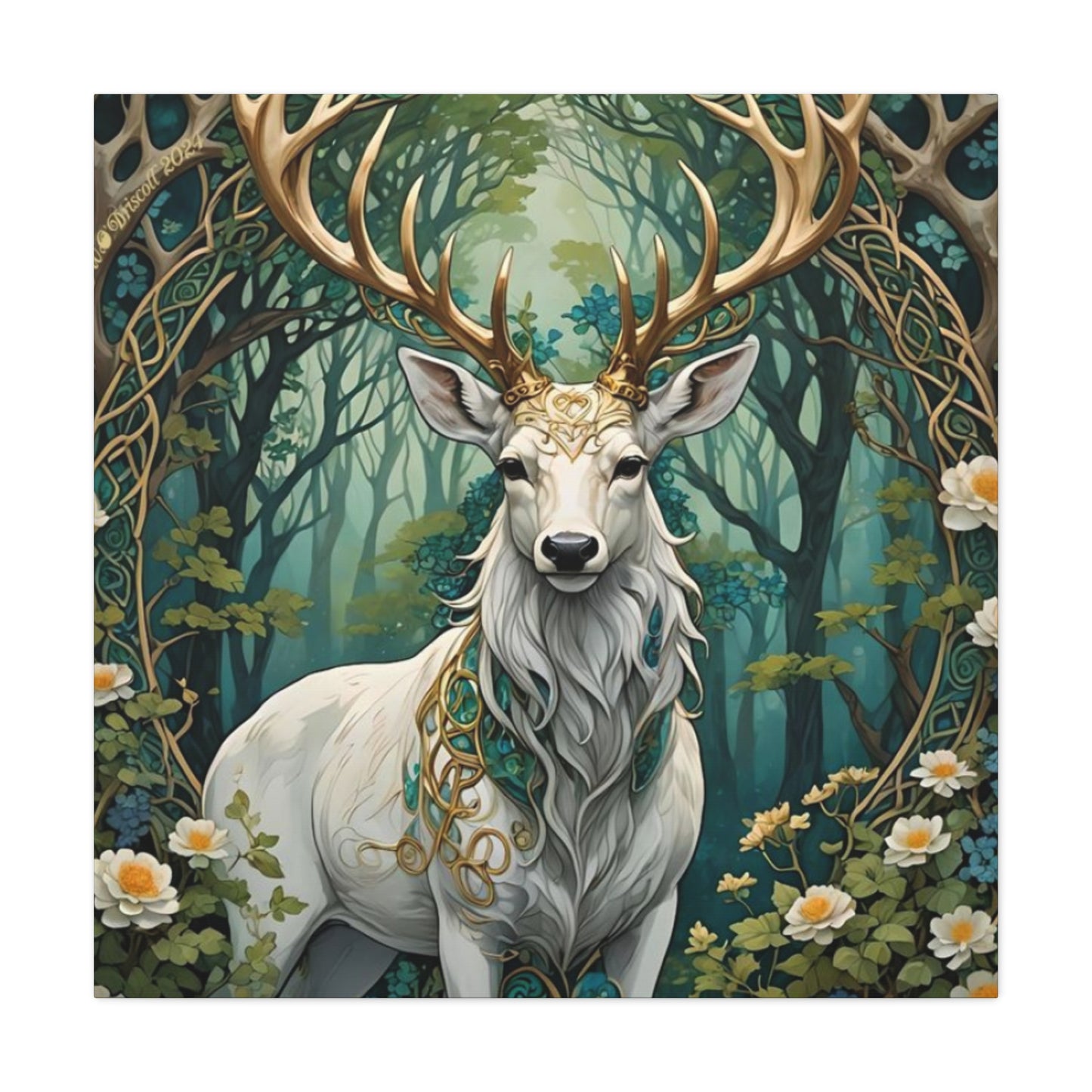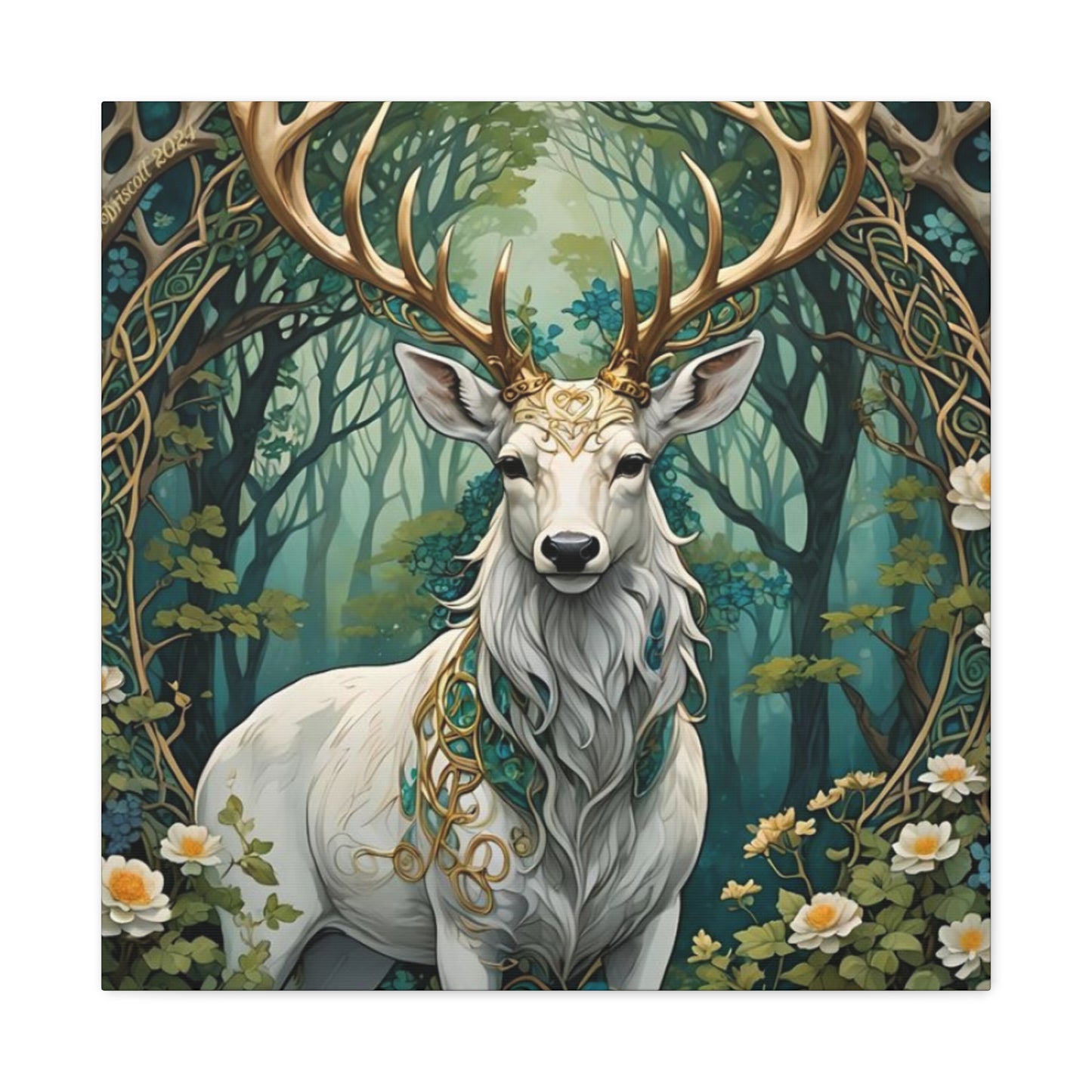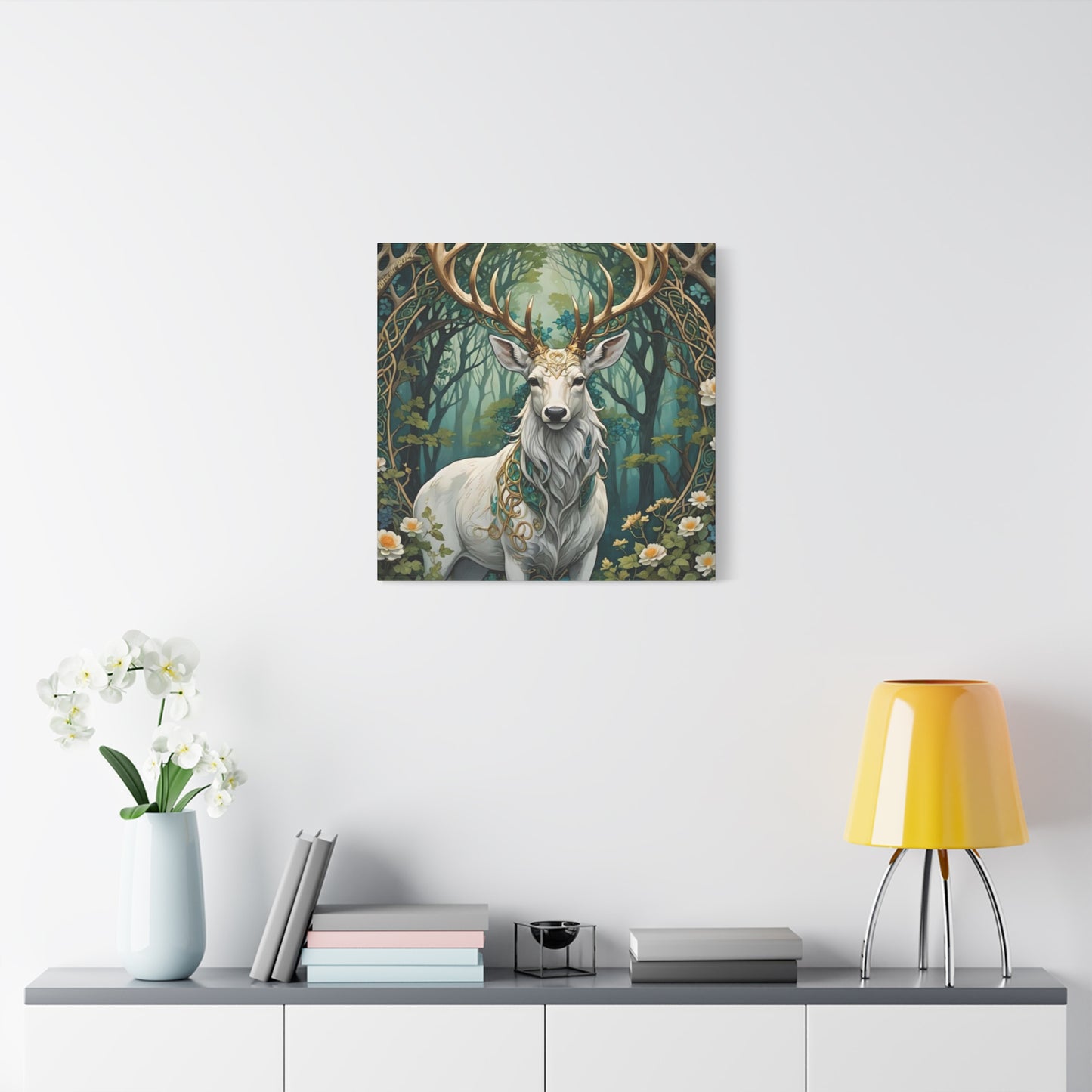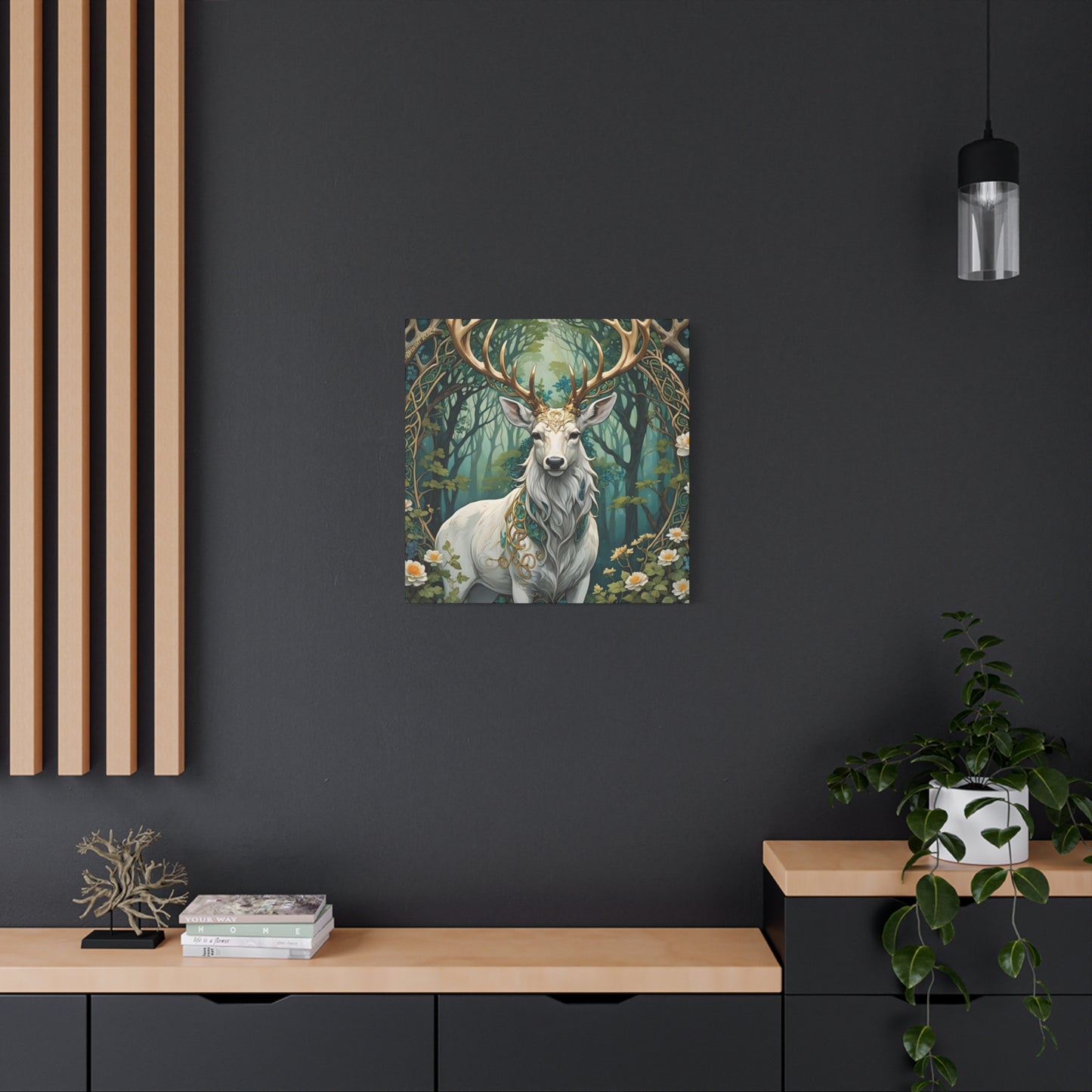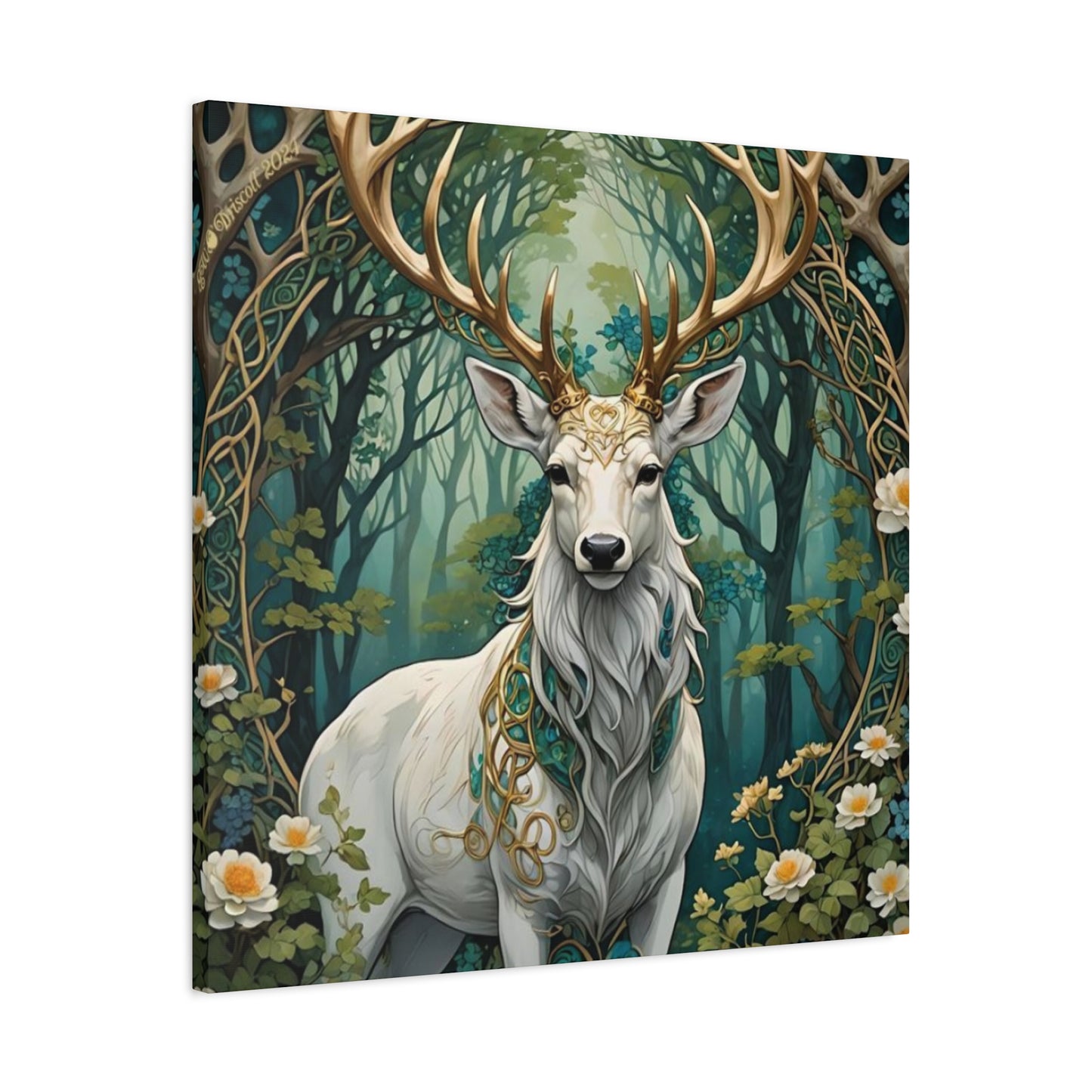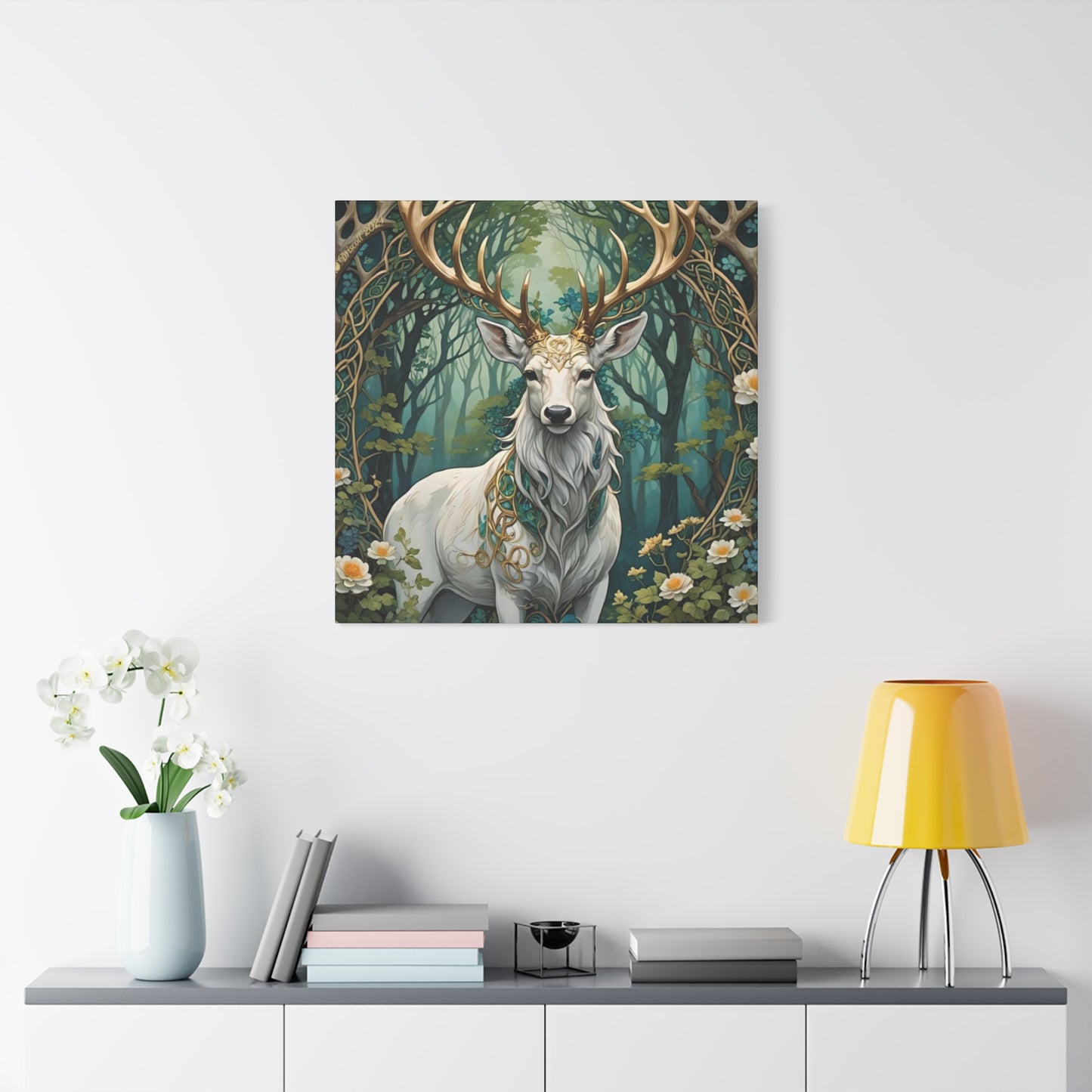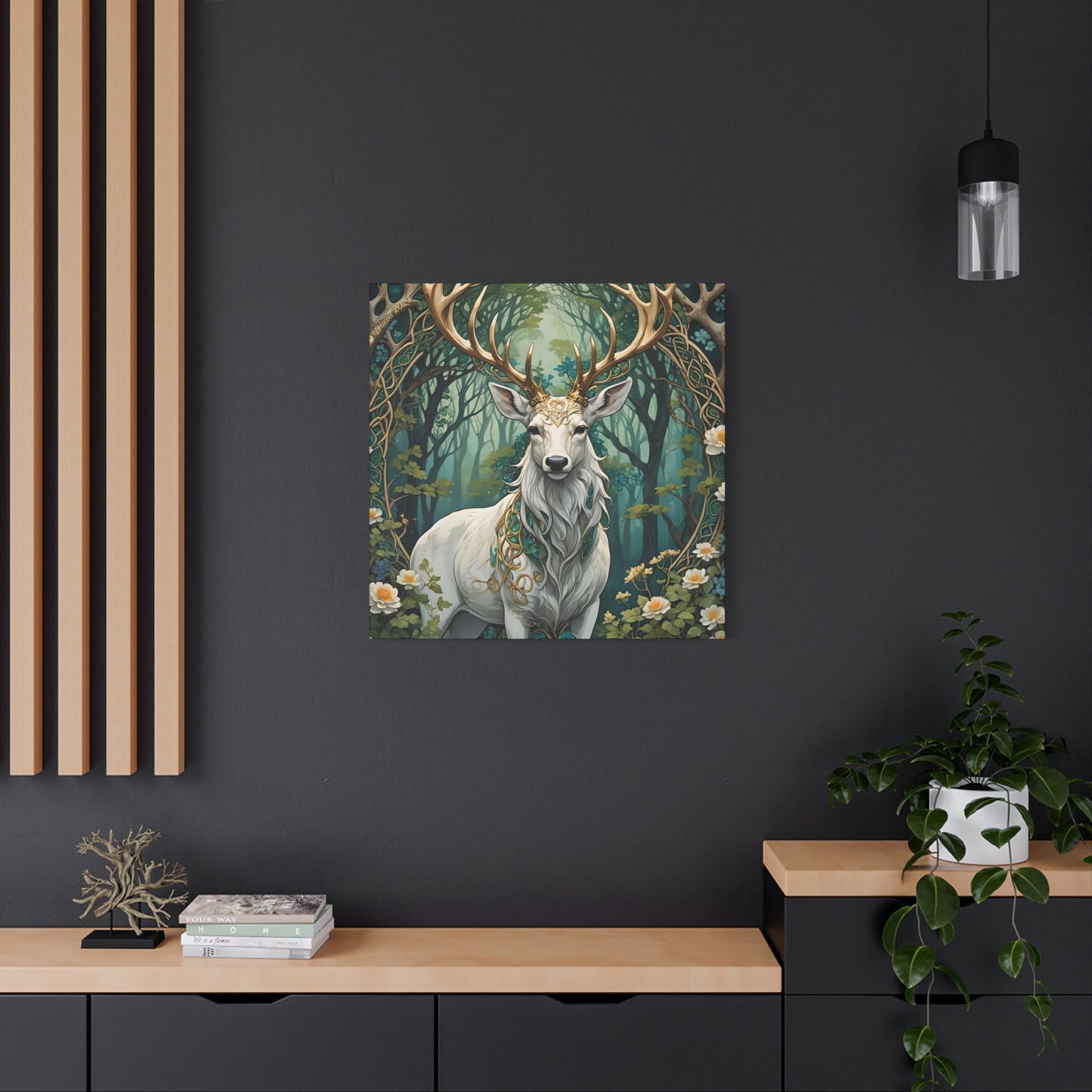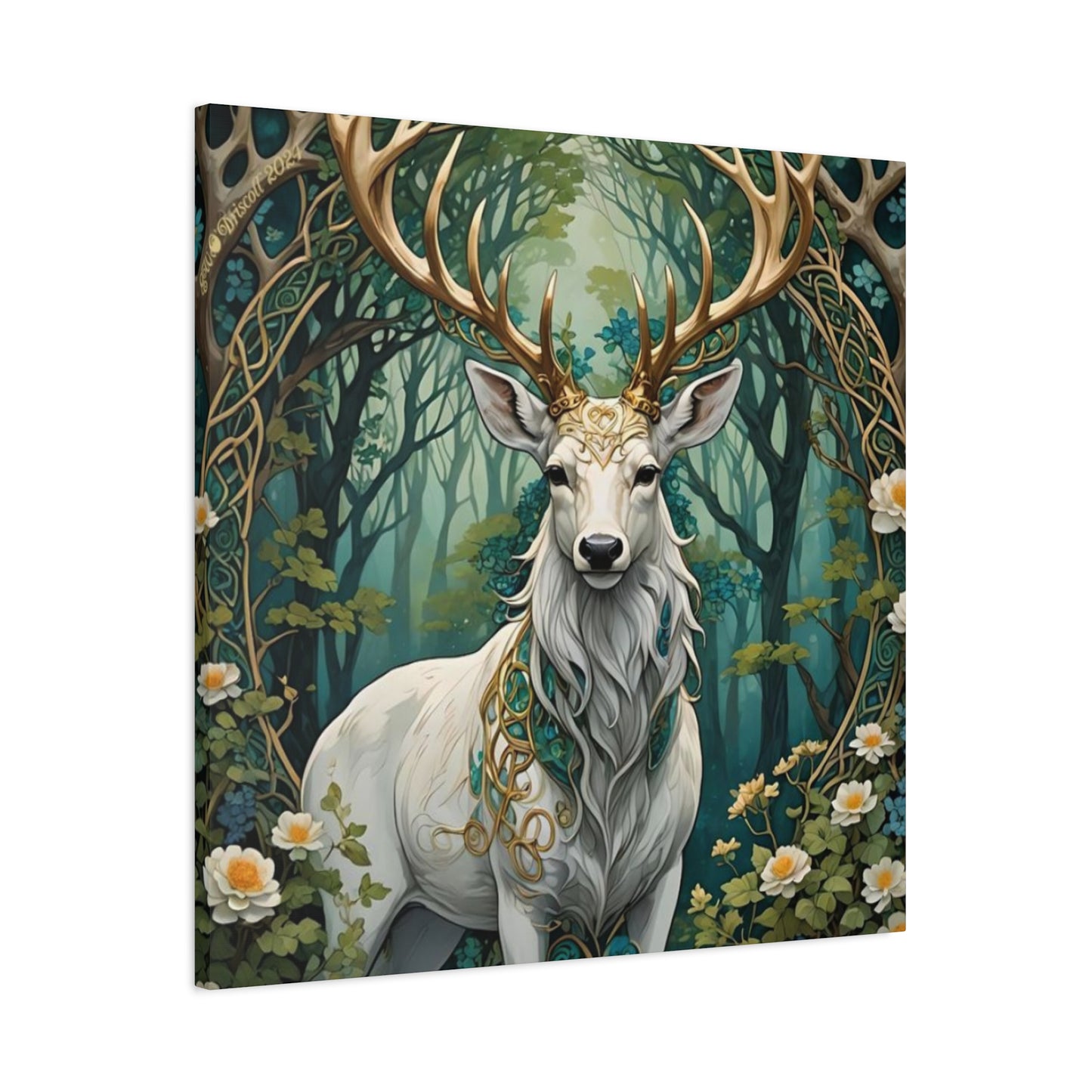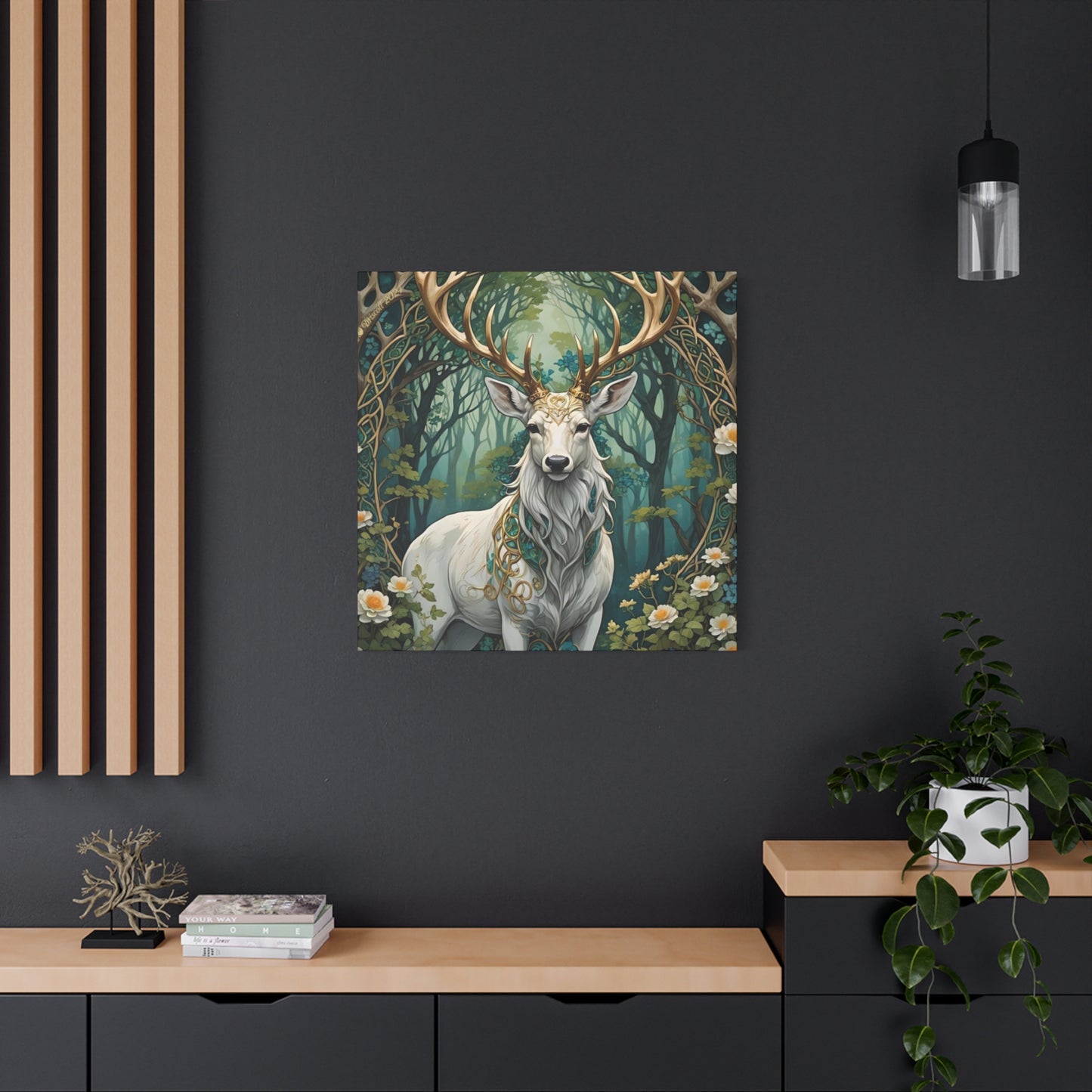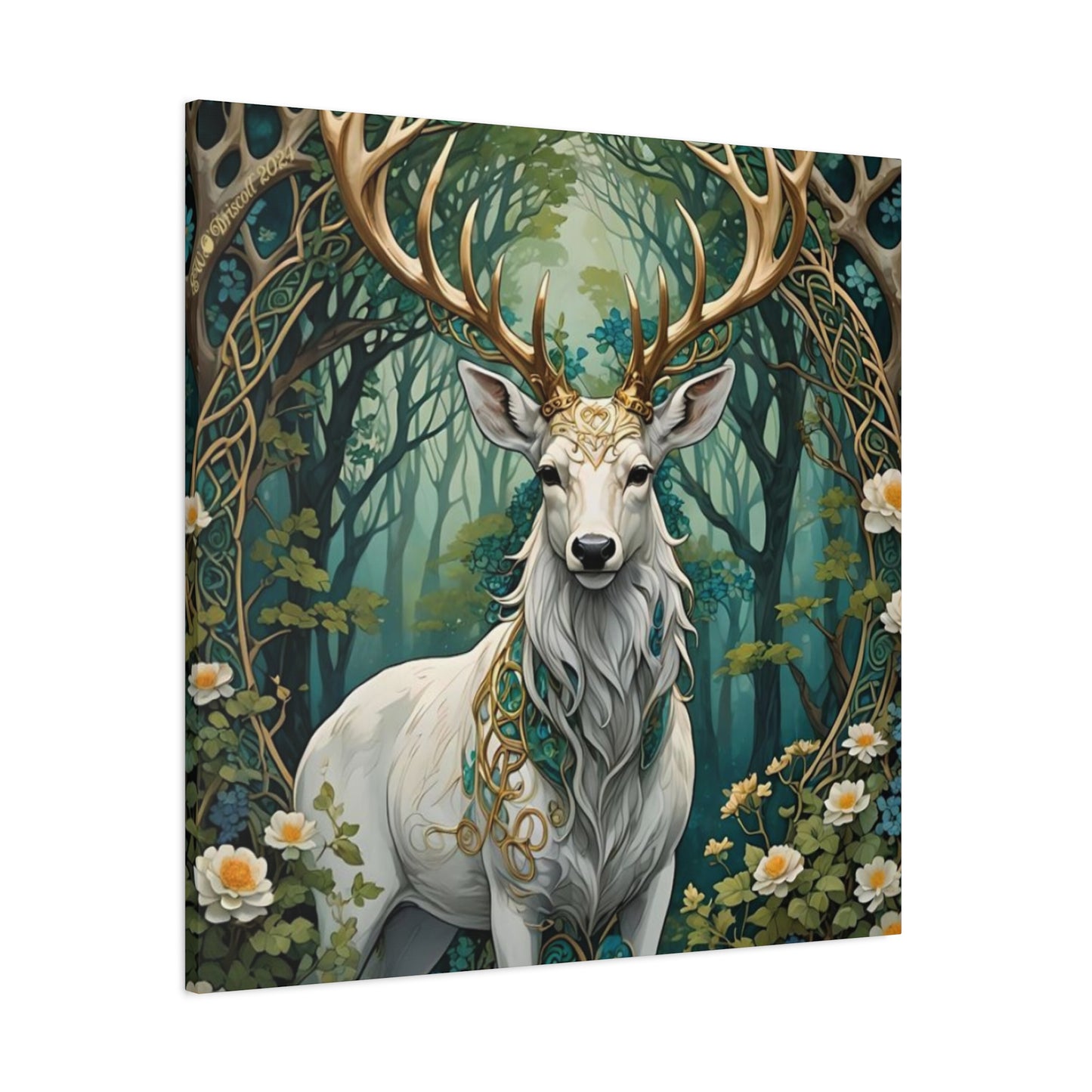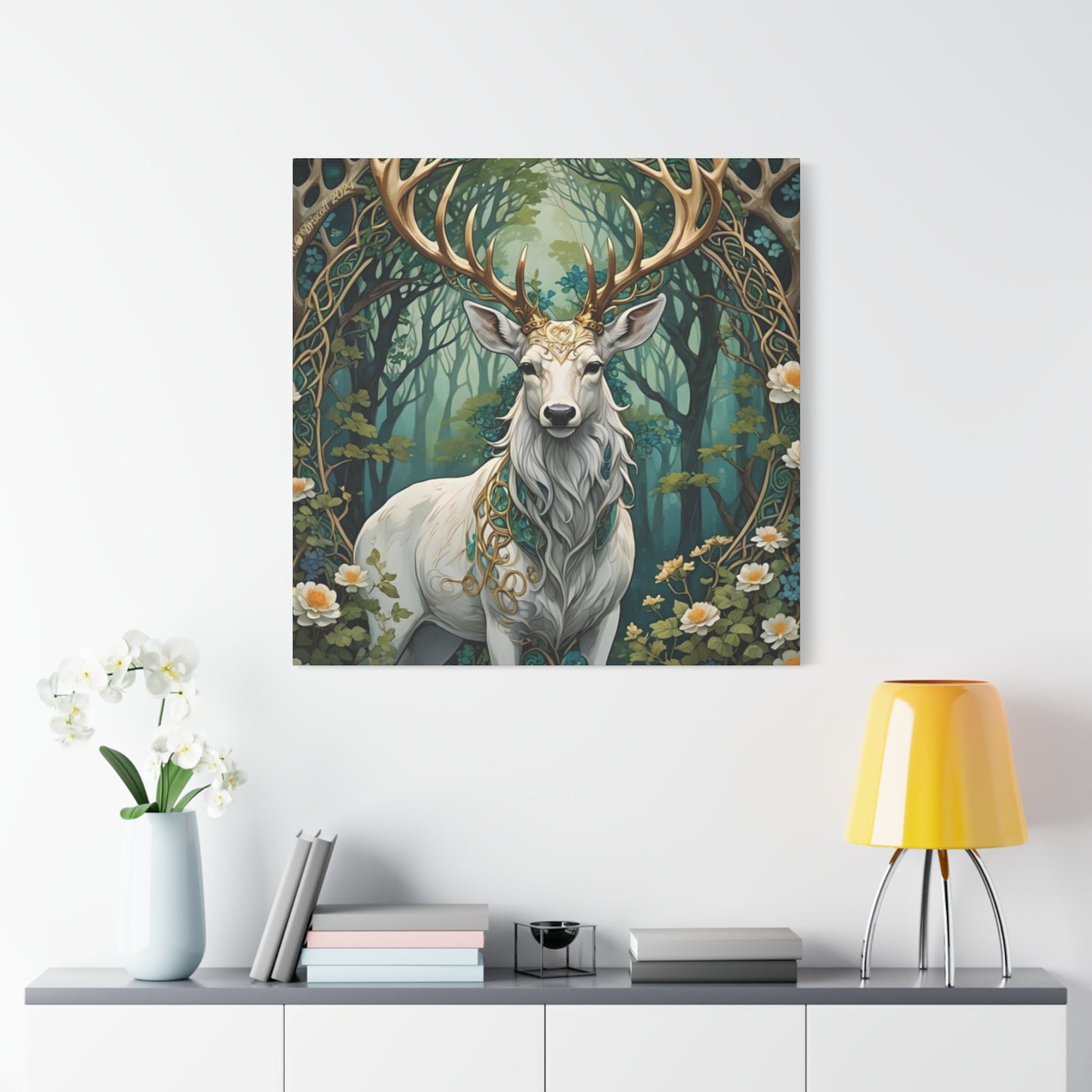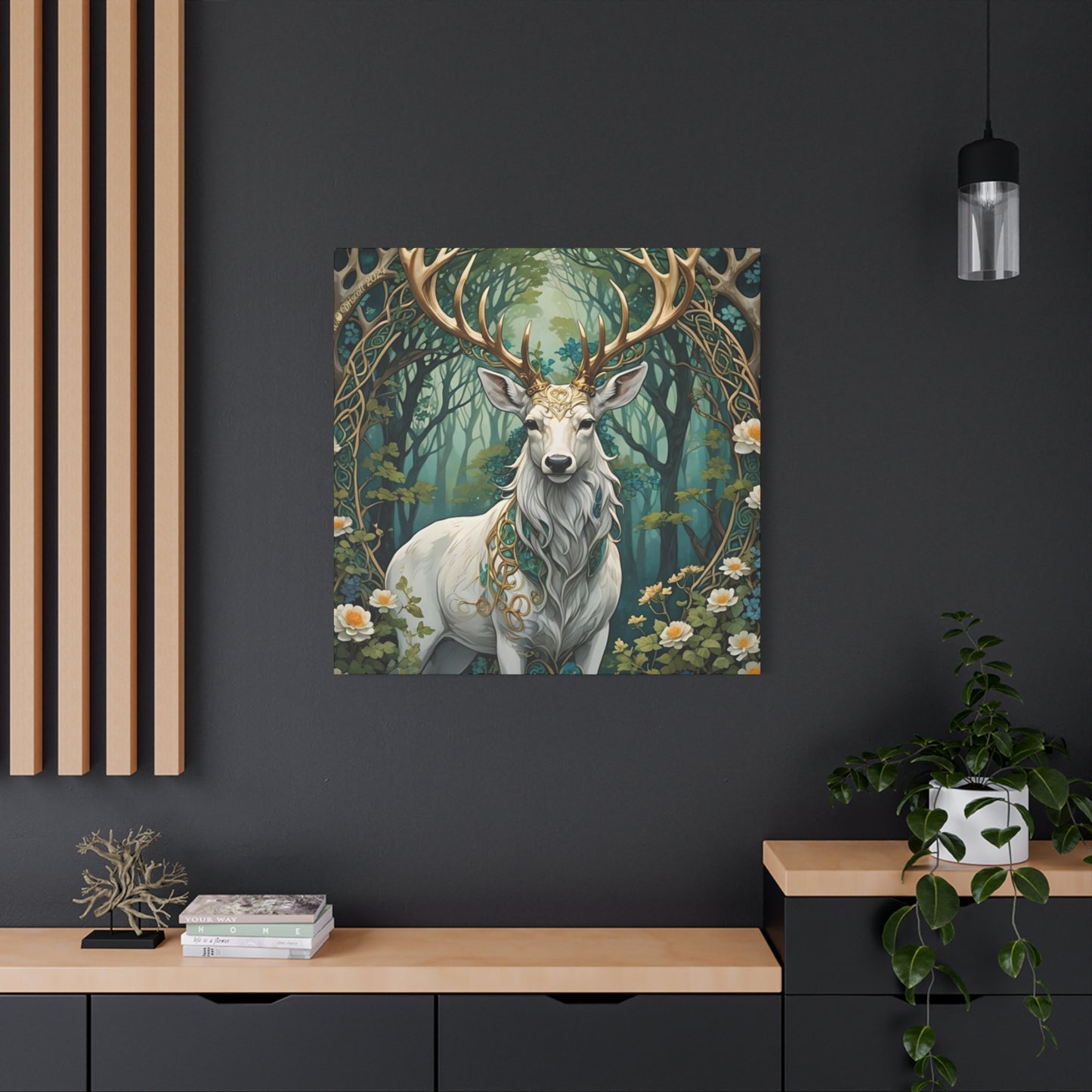Woodland Whimsy: Deer and Flower Wall Art to Inspire Peace and Natural Beauty
The enchanting combination of graceful deer and delicate blooms has captivated artists and homeowners alike, creating a timeless aesthetic that brings the serene beauty of nature indoors. Deer and flower wall art represents more than mere decoration; it embodies a philosophy of peaceful coexistence between wildlife and botanical elements, creating harmonious compositions that speak to our deepest connection with the natural world.
This artistic fusion draws inspiration from centuries of wildlife art traditions, where deer have long been symbols of gentleness, grace, and natural wisdom. When paired with flowering elements, these creatures take on additional layers of meaning, representing renewal, growth, and the cyclical nature of life. The resulting artwork serves as a bridge between the untamed wilderness and cultivated garden beauty, offering viewers a moment of tranquility in their daily lives.
Modern interpretations of deer and flower wall art have evolved to encompass various artistic styles, from hyperrealistic wildlife portraits adorned with botanical details to abstract interpretations that capture the essence of both subjects through color and form. Artists working in this genre often employ techniques that highlight the contrast between the deer's natural strength and the flowers' delicate vulnerability, creating compositions that are both visually striking and emotionally resonant.
The appeal of deer and flower wall art extends beyond its aesthetic value, tapping into our fundamental need for connection with nature. In an increasingly urbanized world, these artworks serve as windows to the natural realm, reminding us of the beauty that exists beyond our concrete environments. They offer a sense of escapism and peace, transforming any room into a sanctuary where viewers can momentarily retreat from the stresses of modern life.
Contemporary artists have embraced this theme with innovative approaches, incorporating mixed media techniques, digital art methods, and experimental color palettes to create fresh interpretations of this classic subject matter. Some focus on realistic depictions that celebrate the intricate details of deer anatomy alongside botanical accuracy, while others explore more stylized approaches that prioritize emotional impact over literal representation.
The versatility of deer and flower wall art makes it suitable for various aesthetic preferences and environments. Whether displayed in rustic cabins, modern apartments, or traditional homes, these pieces adapt to their surroundings while maintaining their inherent charm. The natural color palette typically associated with this art form complements both neutral and vibrant decor schemes, making it an accessible choice for diverse decorating styles.
Deer and Flower Wall Art Beauty
The inherent beauty of deer and flower wall art lies in its ability to capture two of nature's most beloved subjects in perfect harmony. The graceful silhouette of a deer, with its elegant neck and alert posture, creates a striking contrast against the soft, organic forms of blooming flowers. This juxtaposition generates visual interest while maintaining an overall sense of tranquility and natural balance.
Artists who specialize in this genre understand the importance of composition in creating truly beautiful pieces. The placement of floral elements around or near the deer figure requires careful consideration of color relationships, scale proportions, and visual flow. Some artists choose to integrate flowers directly into the deer's form, creating fantastical creatures that seem to bloom from within, while others prefer to place blooms in the surrounding environment, suggesting a natural habitat where wildlife and plant life coexist peacefully.
The beauty of these artworks often stems from their ability to evoke emotional responses through color harmony and symbolic meaning. Soft pastels might suggest spring renewal and gentle femininity, while deeper, richer tones could convey autumn maturity and earthly wisdom. The choice of flower varieties also contributes to the overall aesthetic impact, with roses suggesting romance and passion, while wildflowers might evoke freedom and natural spontaneity.
Texture plays a crucial role in enhancing the beauty of deer and flower wall art. The smooth, sleek coat of a deer contrasts beautifully with the layered petals of flowers, creating tactile interest even in two-dimensional representations. Artists often emphasize these textural differences through their brushwork or digital techniques, using smooth, flowing strokes for the deer's form and more varied, organic marks for floral elements.
The interplay of light and shadow in well-executed deer and flower wall art adds another layer of beauty to these compositions. Subtle gradations in tone can make a deer appear to step forward from the canvas, while dappled light filtering through flower petals creates depth and atmospheric quality. These lighting effects not only enhance the realistic aspects of the artwork but also contribute to its overall mood and emotional impact.
Many collectors find that the beauty of deer and flower wall art lies in its timeless quality. Unlike trendy decorative elements that may quickly become outdated, these natural subjects possess an enduring appeal that transcends fashion cycles. The universal recognition and appreciation of both deer and flowers ensure that these artworks remain relevant and beautiful across different generations and cultural contexts.
The beauty of this art form also extends to its versatility in terms of scale and presentation. A small, intimate piece featuring a single deer surrounded by delicate blossoms can create a focal point in a cozy reading nook, while a large-scale composition might serve as a dramatic statement piece in a grand living area. The inherent beauty of the subject matter translates effectively across different sizes and formats.
Contemporary interpretations of deer and flower wall art continue to explore new dimensions of beauty through innovative artistic techniques. Digital artists might incorporate luminescent effects that make flowers appear to glow with inner light, while traditional painters might experiment with impasto techniques that give physical dimension to flower petals. These modern approaches expand the definition of beauty in this artistic genre while maintaining its fundamental appeal.
Popular Deer with Flower Prints
The popularity of deer with flower prints has surged in recent years, driven by increasing interest in nature-inspired home decor and the growing awareness of wildlife conservation themes. These prints appeal to a broad audience, from nature enthusiasts and wildlife lovers to those simply seeking peaceful, beautiful artwork for their homes. The combination of these two beloved natural elements creates prints that are both aesthetically pleasing and emotionally meaningful.
Among the most popular styles are those featuring white-tailed deer adorned with crown-like arrangements of flowers, often roses or peonies, creating an almost regal appearance. These prints tap into fairy tale aesthetics while maintaining a connection to realistic wildlife portraiture. The contrast between the deer's natural brown tones and the vibrant colors of the flowers creates visually striking compositions that work well in both traditional and contemporary settings.
Watercolor-style deer with flower prints have gained particular popularity due to their soft, dreamy quality that appeals to those seeking gentle, calming artwork. These prints often feature loose, flowing brushstrokes that blur the boundaries between the deer and floral elements, creating an almost ethereal quality. The transparency and layering effects possible with watercolor techniques allow artists to create depth and luminosity that enhances the overall appeal of these prints.
Vintage-inspired deer with flower prints draw from historical botanical illustration traditions, combining scientific accuracy with artistic beauty. These prints often feature detailed line work and muted color palettes reminiscent of antique natural history books. The popularity of this style reflects a broader trend toward appreciating traditional craftsmanship and the aesthetic value of historical scientific illustration.
Modern minimalist interpretations of deer with flower prints have also found their audience among those who prefer cleaner, more simplified artistic expressions. These prints might feature silhouette-style deer forms with strategically placed floral accents, or geometric interpretations of both subjects that maintain recognizability while embracing contemporary design principles. The popularity of minimalist deer and flower prints demonstrates the adaptability of this theme to various aesthetic preferences.
Bohemian-style deer with flower prints incorporate rich, saturated colors and intricate pattern work that appeals to those drawn to eclectic, globally-inspired decor. These prints might feature deer surrounded by mandala-like flower arrangements or incorporate textile-inspired patterns that give the artwork a handcrafted, artisanal quality. The popularity of boho-style prints reflects the ongoing influence of global design trends in contemporary home decor.
Seasonal variations of deer with flower prints have also proven popular, with spring versions featuring cherry blossoms or tulips, summer prints incorporating sunflowers or wildflower meadows, autumn designs with chrysanthemums or maple leaves, and winter scenes with evergreen elements or crystalline flower forms. This seasonal approach allows collectors to rotate their artwork throughout the year, maintaining fresh visual interest.
Digital art interpretations of deer with flower prints have opened new possibilities for creative expression and customization. These prints can incorporate special effects, unusual color combinations, and hybrid realistic-abstract approaches that wouldn't be possible with traditional media. The popularity of digital deer and flower prints reflects the growing acceptance of digital art as a legitimate artistic medium.
The rise of print-on-demand services has made deer with flower prints more accessible to a broader audience, allowing independent artists to reach global markets and customers to find unique, specialized designs that might not be available through traditional retail channels. This accessibility has contributed significantly to the overall popularity of this art form.
Choosing Deer Flower Canvas Size
Selecting the appropriate canvas size for deer flower artwork requires careful consideration of multiple factors, including the intended display location, viewing distance, level of detail in the artwork, and overall aesthetic impact desired. The size of the canvas dramatically affects how viewers experience and interact with the artwork, making this decision crucial for achieving the desired decorative and emotional effect.
Small deer flower canvases, typically ranging from 8x10 inches to 16x20 inches, work exceptionally well in intimate settings where close viewing is expected. These sizes allow for detailed examination of intricate floral elements and subtle expressions in the deer's features. Small canvases are ideal for creating gallery walls, where multiple pieces can be grouped together to create a larger visual impact while maintaining individual significance. They also work well in bedrooms, bathrooms, or small office areas where wall area might be limited.
Medium-sized canvases, generally falling between 18x24 inches and 24x36 inches, offer versatility that makes them popular choices for most residential applications. These dimensions provide enough area for artists to include substantial detail in both the deer and floral elements while remaining manageable for most wall configurations. Medium canvases work particularly well above furniture pieces like sofas, beds, or console tables, where they can serve as focal points without overwhelming the surrounding decor.
Large deer flower canvases, measuring 30x40 inches or larger, create dramatic impact and work best in areas with high ceilings and ample wall area. These substantial pieces can anchor entire room designs and create stunning focal points in living rooms, dining areas, or entryways. Large canvases allow artists to include extensive detail and complex compositions that reward close examination while maintaining visual impact from across the room.
When choosing canvas size, consider the complexity and style of the deer flower artwork. Highly detailed, realistic pieces with intricate floral arrangements benefit from larger sizes that allow viewers to appreciate the artist's craftsmanship. Conversely, minimalist or abstract interpretations might be more effective at smaller sizes where the simplified forms can create maximum impact without requiring extensive detail.
The viewing distance plays a crucial role in size selection. Artwork intended for close viewing, such as pieces displayed in hallways or reading areas, can be smaller while still maintaining visual interest. Pieces meant to be viewed from across a room need sufficient size to read clearly and create visual impact from that distance. Consider the primary viewing positions when determining appropriate canvas dimensions.
Room proportions should heavily influence size decisions. High-ceilinged rooms can accommodate larger canvases that might appear overwhelming in areas with standard ceiling heights. Similarly, furniture scale should be considered, with larger pieces requiring proportionally sized artwork to maintain visual balance. A massive sectional sofa might dwarf a small canvas, while an oversized piece could overwhelm delicate furniture.
The number of other artworks in the area also affects optimal canvas size choices. If the deer flower piece will be part of a larger collection or gallery wall, smaller dimensions might work better to maintain visual harmony with surrounding pieces. Conversely, if the piece will serve as the primary artistic element in the room, a larger size might be more appropriate.
Budget considerations often play a role in canvas size selection, as larger pieces typically cost more due to increased material costs and the additional time required for creation. However, the cost per square inch often decreases with larger sizes, making them potentially more economical for those seeking maximum visual impact.
Practical considerations such as shipping, handling, and installation should also factor into size decisions. Very large canvases might require special shipping arrangements and professional installation, while smaller pieces can be easily handled and positioned by homeowners.
Framing Deer and Flower Art
The framing of deer and flower art plays a vital role in enhancing the artwork's visual impact, protecting the piece from environmental damage, and integrating it successfully into the intended decorative scheme. Proper framing can elevate even modest artworks while inappropriate choices might diminish the impact of exceptional pieces. The frame serves as a transitional element between the artwork and its surroundings, requiring thoughtful consideration of style, color, material, and proportion.
Traditional wood frames remain popular choices for deer and flower art, particularly pieces that emphasize natural themes or rustic aesthetics. Rich walnut or oak frames complement the earthy tones typically found in wildlife art while providing substantial visual weight that can anchor larger compositions. Lighter woods like pine or birch work well with more delicate, feminine interpretations of the subject matter, particularly those featuring soft pastels or watercolor techniques.
Modern metal frames offer sleek, contemporary alternatives that can make deer and flower art feel current and sophisticated. Black metal frames provide strong contrast that can make colors appear more vibrant, while brushed silver or gold metal frames add subtle luxury without overwhelming delicate artwork. The clean lines of metal frames work particularly well with minimalist or geometric interpretations of deer and flower themes.
Floating frames, which create the appearance that the artwork is suspended within the frame structure, have gained popularity for their ability to showcase the entire canvas edge-to-edge. This framing style works exceptionally well with deer and flower canvases that extend color or design elements to the very edges, as it preserves the artist's intended composition without cropping. Floating frames also create visual depth that can enhance the dimensional quality of the artwork.
Matting decisions significantly impact the final presentation of framed deer and flower art. Wide mats can create breathing room around busy compositions, allowing intricate details to be appreciated without visual clutter. Neutral mat colors like cream, white, or soft gray typically work well with nature-themed artwork, though colored mats might be chosen to echo specific flower colors or complement room decor. Double matting, using two different colors or textures, can add sophistication and visual interest.
The choice between glass and acrylic glazing affects both protection and appearance. Regular glass provides excellent clarity but can create reflections that interfere with viewing. Museum-quality glass with anti-reflective coating eliminates glare issues while providing superior protection against UV damage. Acrylic glazing offers lighter weight and break resistance but may be more prone to scratching and static attraction of dust.
Conservation framing becomes particularly important for valuable or meaningful deer and flower art pieces. Acid-free mats and backing materials prevent chemical damage over time, while proper spacing ensures the artwork doesn't come into direct contact with the glazing. These conservation measures help preserve the artwork's appearance and value for future generations.
Custom framing allows for perfect tailoring to both the artwork and the display environment, though it typically costs more than standard sizes. Professional framers can provide expert advice on appropriate materials and techniques while ensuring proper construction and protection. However, high-quality ready-made frames in standard sizes can provide excellent results at lower cost for artwork that fits common dimensions.
The frame's visual weight should complement rather than compete with the artwork. Heavily detailed deer and flower compositions might benefit from simpler frame designs that don't add visual complexity, while minimalist artworks might be enhanced by frames with more decorative elements. The goal is achieving balance between the frame and artwork that serves the overall aesthetic purpose.
Consideration of the display environment influences framing decisions significantly. Humid environments like bathrooms might require sealed framing systems, while areas with direct sunlight exposure demand UV-protective glazing. High-traffic areas might benefit from acrylic glazing to prevent breakage, while formal settings might call for more traditional glass options.
Symbolism in Deer and Flower Prints
The rich symbolism embedded within deer and flower prints creates layers of meaning that extend far beyond their immediate visual appeal, tapping into ancient cultural associations and universal human experiences. These symbolic elements transform decorative artwork into meaningful statements about life, nature, spirituality, and personal values, making deer and flower prints particularly resonant for viewers seeking artwork with deeper significance.
Deer have carried symbolic meaning across virtually all human cultures throughout history, consistently representing qualities like gentleness, grace, intuition, and spiritual sensitivity. In many traditions, deer serve as messengers between the physical and spiritual realms, their alert posture and keen senses suggesting heightened awareness and connection to subtle energies. When featured in artwork, deer often symbolize the gentle aspects of strength, showing that power need not be aggressive or dominating to be effective.
The association between deer and femininity runs deep in many cultures, with the graceful movements and nurturing behavior of does representing ideal feminine qualities. This symbolism makes deer and flower prints particularly meaningful in contexts celebrating feminine energy, motherhood, or the sacred feminine principle. The combination with flowers, themselves often symbolic of feminine beauty and reproductive power, reinforces these associations.
Different flower types bring their own symbolic meanings to deer and flower prints, creating complex layers of interpretation. Roses traditionally symbolize love, passion, and beauty, but their meaning shifts based on color and presentation. Red roses suggest passionate love, while white roses represent purity and innocence. Pink roses convey gentle affection and gratitude. When combined with deer imagery, roses might suggest the gentle, nurturing aspects of love or the beauty found in natural, unforced relationships.
Cherry blossoms carry profound meaning in many Asian cultures, representing the ephemeral nature of life and the importance of appreciating beauty in the present moment. Deer and cherry blossom combinations create artwork rich with meditation on impermanence, renewal, and the cyclical nature of existence. These prints often appeal to those drawn to mindfulness practices or Eastern philosophical traditions.
Wildflowers in deer and flower prints typically symbolize freedom, spontaneity, and the untamed beauty of nature. Unlike cultivated garden flowers, wildflowers represent natural authenticity and the joy found in simple, unpretentious beauty. This symbolism aligns perfectly with deer imagery, creating artwork that celebrates the wild, uncontrolled aspects of nature and life.
Sunflowers bring associations with positivity, loyalty, and spiritual devotion, their faces following the sun's path symbolizing faith and dedication. Deer and sunflower combinations might represent optimism, spiritual seeking, or the importance of maintaining positive outlook despite life's challenges. These prints often appeal to those seeking uplifting, encouraging artwork.
The seasonal associations of different flowers add temporal symbolism to deer and flower prints. Spring flowers like tulips and daffodils suggest new beginnings, hope, and renewal, making them popular choices for artwork intended to inspire fresh starts or celebrate life transitions. Summer flowers might represent abundance and fullness of life, while autumn blooms could symbolize maturity and wisdom.
Color symbolism within deer and flower prints adds another layer of meaning. Earth tones suggest grounding, stability, and connection to natural cycles. Pastels might represent gentleness, new beginnings, or feminine energy. Vibrant, saturated colors could symbolize passion, energy, and life force. The interplay between deer coloring and flower hues creates complex symbolic relationships that reward contemplation.
In some spiritual traditions, deer represent the soul's journey toward enlightenment, their ability to move silently through forests symbolizing the quiet, inner work of spiritual development. Flowers, particularly lotus blossoms, represent the soul's blooming into full awareness. These prints might serve as meditation focal points or reminders of personal spiritual goals.
The placement and interaction between deer and flowers within the composition can affect symbolic interpretation. A deer crowned with flowers might suggest the harmony between earthly beauty and spiritual awareness. Deer grazing among flowers could symbolize peaceful coexistence with life's beauty. These compositional choices allow artists to craft specific symbolic messages within their work.
Mixing Deer Flower with Botanical Decor
Successfully integrating deer flower artwork with existing botanical decor requires understanding how to balance competing natural elements while creating cohesive, harmonious environments that celebrate nature's diversity without overwhelming the senses. This approach demands careful attention to color relationships, scale considerations, thematic consistency, and visual rhythm throughout the area.
The foundation for successfully mixing deer flower art with botanical decor lies in identifying common color threads that can unite disparate elements. If existing botanical prints feature predominantly green palettes with accent colors, deer flower art should incorporate similar hues, either in the floral elements or background treatment. This doesn't require exact color matching but rather establishing harmonious relationships that allow the eye to move comfortably between different pieces.
Varying the scales of botanical elements helps prevent visual competition between deer flower art and surrounding plant-themed decor. If large-scale botanical prints dominate the area, smaller deer flower pieces can provide intimate focal points without competing for attention. Conversely, if delicate botanical illustrations are prominent, a substantial deer flower canvas can serve as an anchoring element that gives weight to the overall composition.
Mixing realistic and stylized botanical elements creates visual interest while maintaining thematic unity. A photorealistic deer flower canvas might pair beautifully with vintage botanical illustrations or modern abstract plant forms. This variety in artistic interpretation prevents the decor from becoming monotonous while celebrating different approaches to natural subject matter.
Texture variation between different botanical elements enhances the overall sensory experience of the decorated area. Smooth deer flower canvases might be balanced with textured botanical prints, pressed flower displays, or three-dimensional plant sculptures. These textural contrasts create depth and interest while maintaining the natural theme throughout the room.
Consider the natural relationships between the plants depicted in existing botanical decor and the flowers featured in deer artwork. If the botanical prints showcase woodland plants like ferns and moss, deer flower art featuring forest wildflowers creates logical thematic connections. Garden-themed botanical prints might pair well with deer art incorporating cultivated flowers like roses or peonies.
The arrangement and grouping of mixed botanical elements requires attention to visual balance and flow. Create clusters of related pieces rather than distributing them evenly throughout the room, which can create a scattered, unfocused appearance. A grouping might include a central deer flower piece flanked by complementary botanical prints, with smaller elements like pressed flowers or plant sketches filling in around the main composition.
Seasonal considerations can guide the mixing of deer flower art with botanical decor, creating displays that can be updated throughout the year. Spring arrangements might emphasize deer art with cherry blossoms alongside botanical prints of emerging foliage. Summer displays could feature sunflower deer art with lush botanical illustrations, while autumn combinations might include deer with chrysanthemums paired with prints of changing leaves.
The formality level of different botanical elements should be considered when creating mixed displays. Formal botanical illustrations with scientific labeling might clash with whimsical deer flower art unless carefully balanced. However, this contrast can work when intentionally employed to create visual tension and interest. The key is ensuring the overall effect feels intentional rather than accidental.
Incorporating live plants alongside deer flower art and botanical prints creates layers of natural elements that reinforce the overall theme while adding living energy to the area. The live plants should complement rather than compete with the artwork, perhaps echoing flower types depicted in the deer art or providing neutral green backdrops that enhance the colors in the prints.
Frame selection becomes particularly important when mixing deer flower art with botanical decor, as frames can either unite or separate different elements. Consistent frame colors or materials can help diverse botanical subjects feel cohesive, while varied frames might be used to create visual separation between different zones or themes within the larger botanical display.
Famous Deer with Flower Artists
The artistic tradition of depicting deer alongside floral elements has attracted numerous talented artists throughout history, each bringing unique perspectives, techniques, and cultural influences to this enduring theme. These artists have elevated the subject matter beyond simple nature illustration, creating works that explore complex relationships between wildlife, botanical beauty, and human emotion while establishing influential stylistic approaches that continue to inspire contemporary creators.
Contemporary artist Sarah Chen has gained recognition for her ethereal watercolor deer and flower compositions that blur the boundaries between realistic representation and dreamlike fantasy. Her technique involves layering translucent washes that create luminous effects, making flowers appear to glow with inner light while deer figures emerge from misty backgrounds. Chen's work often incorporates Asian artistic traditions, particularly the use of negative activity and subtle color gradations that create depth through suggestion rather than explicit detail.
Digital artist Marcus Rivera has revolutionized deer and flower art through his innovative use of technology and mixed media approaches. Rivera combines traditional painting techniques with digital manipulation to create hyperrealistic deer surrounded by fantastical flower arrangements that couldn't exist in nature. His work often features impossible color combinations and gravity-defying compositions that challenge viewers' perceptions while maintaining emotional authenticity in the animal subjects.
Wildlife artist Elena Petrov specializes in scientifically accurate deer portraits enhanced with botanically correct floral elements that reflect the animals' natural habitats. Her oil paintings demonstrate meticulous attention to anatomical detail and environmental accuracy, creating educational artwork that serves both aesthetic and informational purposes. Petrov's work often features seasonal flower selections that indicate specific times of year and geographic regions.
Abstract expressionist David Kim interprets deer and flower themes through bold gestural paintings that prioritize emotional impact over literal representation. Kim's work uses vigorous brushstrokes and vibrant color combinations to suggest the energy and movement of deer while incorporating floral forms through organic shapes and natural color progressions. His paintings appeal to viewers seeking contemporary interpretations of traditional nature themes.
Botanical illustrator turned fine artist Maria Santos combines scientific precision with artistic vision in her detailed pen and ink deer and flower compositions. Santos's background in botanical illustration informs her incredibly accurate flower depictions, while her artistic development has led to more expressive, stylized approaches to deer figures. Her work often features intricate pattern work and decorative elements inspired by various cultural traditions.
Minimalist artist Robert Chen creates powerful deer and flower compositions using limited color palettes and simplified forms that distill subjects to their essential elements. Chen's paintings often feature single deer silhouettes against backgrounds of suggested floral forms, creating maximum impact through restraint and careful composition. His work appeals to collectors seeking sophisticated, contemporary approaches to nature themes.
Traditional realist painter Katherine Anderson maintains classical painting techniques while bringing fresh perspectives to deer and flower subjects. Anderson's work demonstrates mastery of light, shadow, and form while incorporating contemporary color sensibilities and compositional approaches. Her paintings often feature dramatic lighting effects that create mood and atmosphere while highlighting the natural beauty of both subjects.
Mixed media artist James Wright combines various materials and techniques to create textured deer and flower compositions that engage multiple senses. Wright might incorporate actual pressed flowers, natural fibers, or metallic elements alongside traditional painting media to create works that blur the boundaries between painting and sculpture. His innovative approaches have influenced other artists to experiment with unconventional materials and techniques.
Cultural fusion artist Lin Zhao incorporates traditional Chinese ink painting techniques with Western compositional approaches to create unique deer and flower artworks that bridge cultural traditions. Zhao's work often features flowing, calligraphic brushstrokes that suggest both deer forms and floral elements through economical means, demonstrating how different artistic traditions can inform and enhance each other.
Contemporary impressionist painter Nicole Foster focuses on capturing the fleeting effects of light and atmosphere in outdoor settings where deer and flowers coexist naturally. Foster's plein air paintings demonstrate loose, confident brushwork that suggests rather than describes, creating impressions of natural scenes that emphasize mood and feeling over precise detail.
Abstract Deer and Flower Styles
Abstract interpretations of deer and flower themes liberate artists from the constraints of literal representation, allowing for exploration of form, color, emotion, and symbolic meaning through non-representational approaches that can be more emotionally powerful than realistic depictions. These abstract styles range from barely abstracted realistic forms to completely non-representational compositions that suggest rather than depict their subjects.
Geometric abstraction in deer and flower art reduces organic forms to their fundamental shapes and relationships, creating compositions that maintain recognizability while embracing mathematical precision and clarity. Triangular forms might suggest deer heads or bodies, while circular elements could represent flowers or decorative details. This approach appeals to viewers who appreciate both natural subjects and clean, organized visual structures.
Color field abstraction focuses on large areas of color and their emotional impact rather than specific forms or details. Artists working in this style might use warm earth tones to suggest deer presence while incorporating bright floral colors in gestural or atmospheric ways. The resulting works create emotional responses through color relationships rather than recognizable imagery, allowing viewers to project their own interpretations onto the compositions.
Expressionistic abstract styles prioritize emotional content over visual accuracy, using bold brushstrokes, intense colors, and dynamic compositions to convey the energy and feeling associated with deer and flowers. These works might feature violent, energetic marks that suggest movement and life force, or gentle, flowing gestures that communicate tranquility and natural harmony. The artist's emotional state and intention become primary components of the artwork's meaning.
Biomorphic abstraction uses organic, flowing forms that suggest living creatures and plants without explicitly depicting them. Curved lines might flow through compositions in ways that imply deer movements or growth patterns, while blob-like forms could suggest flower shapes or natural textures. This approach maintains connection to natural subjects while embracing pure form and movement as artistic elements.
Cubist-inspired deer and flower art breaks subjects into geometric facets and multiple viewpoints, creating complex compositions that show various aspects simultaneously. A deer might be depicted from multiple angles within a single composition, while flowers could be deconstructed into their component parts and reassembled in new relationships. This analytical approach reveals hidden structures and relationships within familiar subjects.
Action painting techniques applied to deer and flower themes create dynamic compositions that capture energy and movement through gestural mark-making. Artists might use flowing paint applications to suggest deer in motion or explosive techniques to imply flowering processes. The physical act of painting becomes part of the artwork's meaning, connecting the creative process to natural processes of growth and movement.
Minimalist abstract approaches strip deer and flower subjects down to their most essential elements, using limited colors, simple forms, and clean compositions to create maximum impact through reduction. A single curved line might suggest a deer's neck, while a few strategically placed marks could imply floral presence. This approach requires viewers to actively participate in completing the artistic meaning.
Surreal abstract styles combine deer and flower elements in impossible or dreamlike ways, creating compositions that challenge logical relationships while maintaining emotional authenticity. Flowers might appear to grow from deer bodies, or deer forms might dissolve into floral explosions. These approaches tap into subconscious associations and dream logic rather than waking reality.
Textural abstraction emphasizes surface quality and material properties in creating deer and flower compositions. Heavy impasto techniques might create flower-like textures, while smooth, flowing applications could suggest deer coat qualities. The physical properties of paint and canvas become primary elements in creating meaning and emotional response.
Pattern-based abstract styles incorporate deer and flower elements into repeating or rhythmic compositions that emphasize decorative and structural relationships. These works might use deer silhouettes as repeated motifs within larger patterns, or arrange floral elements in systematic ways that create overall designs. This approach connects to textile traditions and decorative arts while maintaining fine art sensibilities.
Where to Hang Deer Flower Art
Strategic placement of deer flower art maximizes its visual impact while ensuring proper preservation and viewer appreciation, requiring consideration of lighting conditions, wall area availability, viewing angles, room function, and integration with existing decor elements. The location choice can dramatically affect how the artwork is experienced and appreciated over time.
Living rooms offer excellent opportunities for displaying deer flower art as focal points that can anchor furniture arrangements and create conversation starters. Above sofas or seating areas, these pieces benefit from natural viewing positions where guests can appreciate details during conversations. The relaxed atmosphere of living areas suits the peaceful, contemplative nature of most deer flower artwork, creating environments that encourage slow appreciation and emotional connection.
Dining rooms provide formal settings where deer flower art can create sophisticated atmospheres that enhance meal experiences. The contemplative nature of these subjects can contribute to peaceful, mindful eating environments while providing visual interest during longer gatherings. Consider the lighting conditions during different times of day when meals typically occur, ensuring the artwork remains visible and appealing under both natural and artificial illumination.
Bedrooms offer intimate settings where deer flower art can contribute to restful, calming atmospheres conducive to relaxation and sleep. The gentle nature of these subjects makes them ideal for private areas where peace and tranquility are prioritized. Smaller pieces work well in bedrooms, creating personal focal points that can be appreciated during quiet moments without overwhelming the restful atmosphere.
Hallways and entryways benefit from deer flower art that creates welcoming impressions while guiding movement through transitional areas. These locations often have consistent lighting and viewing angles, making them suitable for pieces that need steady illumination to be properly appreciated. Consider the traffic patterns and viewing distances in these areas when selecting appropriate sizes and placement heights.
Home offices and study areas can be enhanced by deer flower art that provides peaceful focal points for visual rest during work periods. The calming nature of these subjects can help reduce stress and promote concentration while adding personal touches to professional environments. Smaller pieces work well in office settings where wall area might be limited by furniture and functional requirements.
Bathroom placement requires careful consideration of humidity and temperature fluctuations that could affect artwork preservation. Properly framed and sealed pieces can work in bathrooms, where the private nature of the location creates opportunities for contemplative viewing during personal care routines. Ensure adequate ventilation and avoid direct exposure to steam or water.
Kitchen placement must account for cooking moisture, temperature changes, and cleaning requirements that could affect artwork condition. Deer flower art can add warmth and natural beauty to kitchen environments, but should be positioned away from direct exposure to cooking processes. Consider easy-to-clean frames and protective glazing in these environments.
Stairway walls provide unique display opportunities where deer flower art can be viewed from multiple angles and distances as people move between levels. The changing perspective can reveal different aspects of the artwork while creating visual interest in otherwise utilitarian areas. Ensure secure mounting in high-traffic areas where vibrations from foot traffic could affect stability.
Guest bedrooms and guest bathrooms offer opportunities to share deer flower art with visitors while creating welcoming, thoughtful environments that demonstrate hospitality and attention to detail. These locations allow for more personal or experimental choices that might not suit main living areas while still providing meaningful viewing experiences.
Seasonal rotation between different locations can keep deer flower art fresh and interesting while protecting pieces from prolonged exposure to challenging environmental conditions. Moving artwork periodically also prevents sun damage and allows for different viewing experiences throughout the year.
Consider the artwork's relationship to windows and natural light sources, which can dramatically affect appearance throughout the day. Some pieces benefit from natural illumination that brings colors to life, while others might fade or suffer damage from direct sunlight exposure. UV-protective glazing and careful positioning can help balance these concerns.
Gift Ideas: Deer with Flower Prints
Deer with flower prints make exceptionally thoughtful gifts that combine universal appeal with personal meaning, suitable for various occasions and recipients who appreciate nature, beauty, or meaningful symbolism. The versatility of this artwork type allows for careful selection based on the recipient's personality, decorating style, life circumstances, and the specific message the giver wishes to convey.
Baby shower and nursery gifts benefit from gentle, soft deer and flower prints that create peaceful, nurturing environments for newborns and parents. Pastel color schemes and simplified compositions work particularly well in nursery settings, while the symbolic associations with gentleness and new growth make these prints meaningful choices for celebrating new life. Consider pieces that can grow with the child, transitioning from nursery decor to childhood bedroom art.
Wedding gifts featuring deer and flower prints can symbolize the gentle, nurturing aspects of romantic relationships while representing natural beauty and harmony. Couples who appreciate nature themes or have outdoor wedding ceremonies might particularly value these meaningful artistic choices. Custom pieces incorporating the couple's wedding flowers or meaningful natural elements create especially personal gifts.
Housewarming presents benefit from deer and flower prints that help transform new residences into welcoming homes filled with natural beauty and peaceful energy. These pieces can serve as foundational decor elements that new homeowners can build around while creating immediate warmth and personality in unfamiliar areas. Consider the recipients' existing style preferences and color schemes when making selections.
Conclusion
Woodland Whimsy’s deer and flower wall art beautifully captures the serene essence of nature, bringing a sense of peace and natural beauty into any living space. These artworks serve as gentle reminders of the quiet elegance found in forests, where delicate blooms and graceful deer coexist in harmony. By incorporating such pieces into your home or office, you create an environment that fosters relaxation and mindfulness, allowing the calming influence of nature to soothe the mind and inspire creativity.
The combination of deer imagery and floral elements in Woodland Whimsy’s designs reflects a timeless connection to the natural world. Deer symbolize gentleness, intuition, and a deep-rooted sense of awareness, while flowers evoke growth, renewal, and the delicate cycles of life. Together, they weave a narrative that invites viewers to slow down and appreciate the subtle beauty around them, encouraging a more peaceful and grounded way of living.
Moreover, this style of wall art fits seamlessly into a variety of interior decor themes—from rustic cabins and farmhouse styles to modern minimalist spaces—making it a versatile choice for those seeking to add warmth and nature-inspired charm to their surroundings. The soft colors and intricate details can complement neutral palettes or provide a gentle contrast to bolder designs, enhancing the visual appeal without overwhelming the room.
Choosing Woodland Whimsy art also represents a conscious decision to celebrate and protect nature. It encourages a deeper awareness of the environment and the fragile ecosystems that deer and wildflowers depend on. This art not only beautifies your walls but also serves as an homage to the natural world, inspiring greater respect and care for the outdoors.
In essence, deer and flower wall art from Woodland Whimsy is more than decoration—it’s a source of inspiration and tranquility. Whether you’re looking to create a calming retreat in your home or searching for a meaningful gift, these pieces bring a touch of wilderness magic and heartfelt connection to nature. Embrace the peaceful spirit of the forest and let your walls tell a story of natural beauty and gentle whimsy.

















